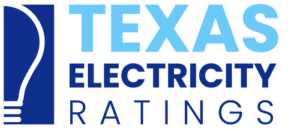To anyone familiar with the Texas Observer, chances are that the title of this post might not surprise you. I saw this article bounce around the internet in several places before Christmas, and even though it is a week old I just can’t let it pass without pointing out some sensationalist tactics and poor research by the author, Forrest Wilder. And it is important to note that the title of this article is “Pay More Or Your Lights Will Go Out.”
The main premise of the article, which isn’t a new one to anyone reading this blog or following Texas electricity in general, is that the EPA rules looming have the potential to put Texas into a power crisis where we won’t have enough electricity generation to meet demand. And the author is saying that Texas is attempting to handle this problem by re-regulating certain aspects of the system.
First, there is reason for concern, no question. The fear is that the prices for electricity are so low (and yet people continue to complain that deregulation doesn’t work?) that new investors won’t invest in new power generation in Texas because they aren’t sure they’ll make their money back or acceptable profits to warrant building new plants. And to make things clear, when Texas electricity deregulated in 1999, the state opted for an Energy-Only system, which means only market forces set prices and not politicians, like in regulated markets.
Poor Research
Oddly enough, at first, the author doesn’t event seem to agree with the idea that there’s an energy crisis in the first place. An excerpt of the article:
They want investors to run into the ERCOT market and build some power plants to deal with the (allegedly) looming crisis.
First, they typically only count generation — wind, coal, natural gas, whatever — once the owner has secured final permission from the state to build. This excludes power plants that will eventually get built but haven’t reached the final stage of permitting.
Also, the reserve margins don’t include so-called “mothballed” power plants — old, inefficient power generation that’ve been taken off-line but could still be made available if economic conditions change.
Wait. So now the author doesn’t even believe there’s really an energy shortage? Well that puts him in the tiny minority on that front. And his solution is to count old, mothballed plants that are being shut down by the EPA? Genius. Here’s the real meat of the article:
“But on the wholesale side, we think that the power prices are going to have to recognize the scarcity of generation assets,” John Young, the CEO of Energy Future Holdings, told analysts in late October. “And that will eventually flow through to the retail business.”
Translation: Consumers must pay more.
And just in case prices don’t go up quick enough, ERCOT and the Texas Public Utility Commission are exploring several “radical changes” to jack up prices during times when power is really tight. For example, the PUC is considering doubling the cap on prices in the wholesale spot market — already the most generous in the nation — from $3,000 per megawatt to $6,000. ERCOT is also looking at allowing prices to go higher in a secondary market used to balance supply and demand. The chairman of the Public Utility Commission, Kenneth Anderson, a Perry appointee, is driving many of the changes.
That last paragraph is where the entire article completely unravels. Doubling, or even removing the cap on wholesale market prices ISN’T REGULATION. In fact, it is literally the OPPOSITE of regulation. It’s letting market forces do their work. So for the author to claim that this solution is regulation is 100% erroneous.
If the state of Texas chose to tax customers for the money to subsidize new generation plants, that would be regulation. If the state of Texas intervened to guarantee investors rates or profits as an incentive for them to build new plants, that would be a form of regulation. Removing a market cap so generators can make more money when energy is high (think every day in August where we had a threat of rolling blackouts) is the opposite of regulation.
And for the record Australia, which also operates nationally under a deregulated Energy-Only market, has set their market cap at $12,500 dollars per MWh. Texas currently sits at $3000, and the talk that has inflamed the reporter at the Texas Observer is the cap being moved to $6000.
Of course, it is somewhat silly claiming deregulation is a failure to begin with when it currently has put Texas as the 3rd cheapest state in the country for available electricity rates.
Yellow Journalism
Just a few notes here, for the sake of amusement and irony. At one point in his article, Mr. Wilder gives us some of these choice lines:
The political class has been infected by fear-mongering. In the short term, all ERCOT can do is whip up fear. Finally, like Alan Greenspan’s every utterance, these reserve margin reports have an effect on the market. They’re meant to avoid the situation — blackouts! scarcity! candlelight! — they warn about. The alarmism is intended to be the opposite of a self-fulfilling prophecy.
I find it ironic that these quotes accusing others of “whipping up fear” are present in an article titled “Pay More Or Your Lights Go Out.” An article that rails against deregulated electricity and suggests (incorrectly) that they’re considering adopting traditionally Regulated practices. Hey Forrest, if you dislike the deregulated system, well, your other option is a regulated system. And your article is saying the electricity prices are going to go up if regulated practices are adopted. What do you think happens if regulation would be re-adopted fully? Guess that didn’t occur to you.
I’m not shocked that an “alternative” newspaper would lean so heavily on yellow journalism to get attention, but I still find it amusing in an eye-rolling kind of way. And sad that it was published at all.
